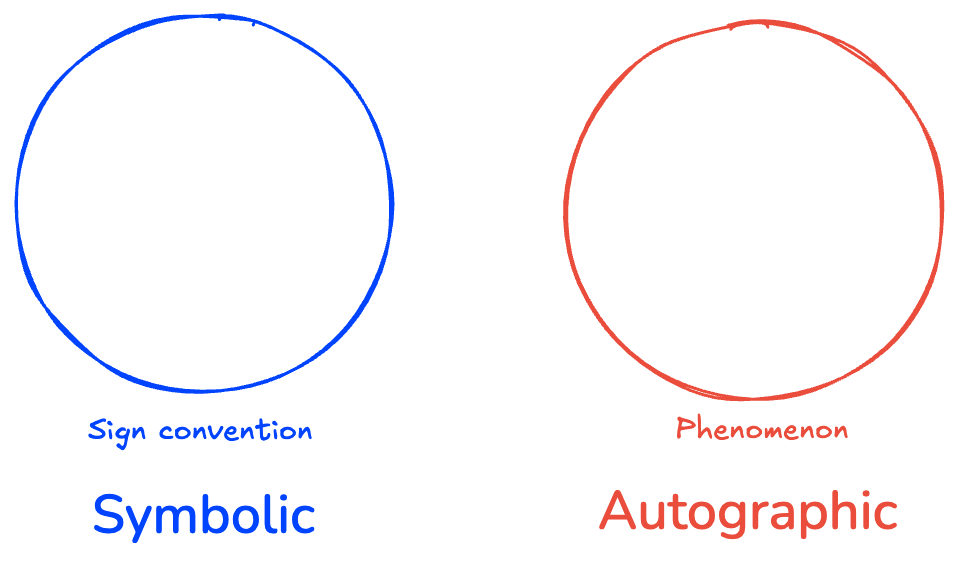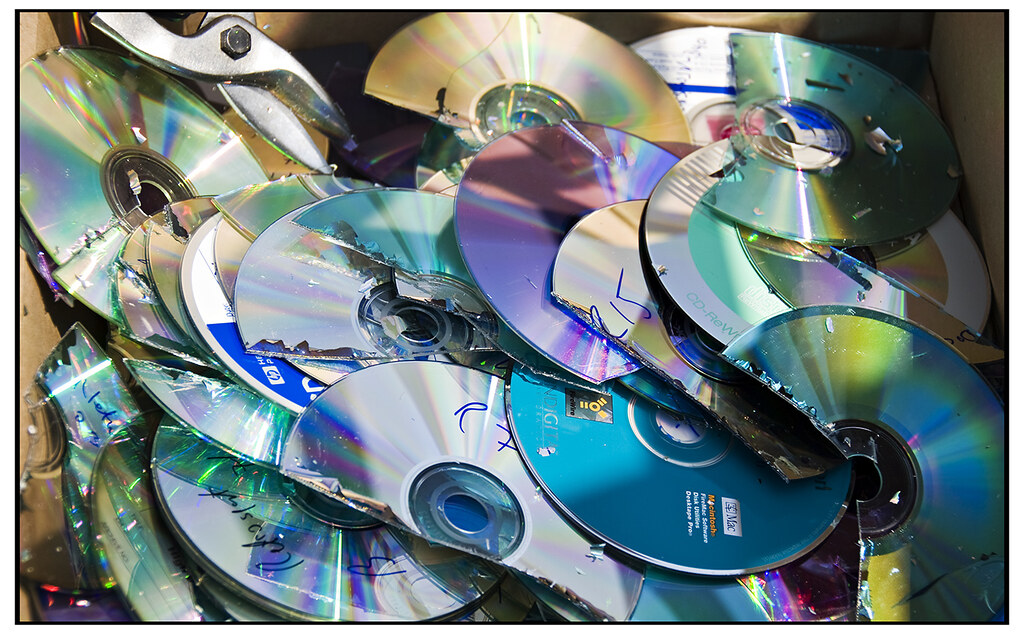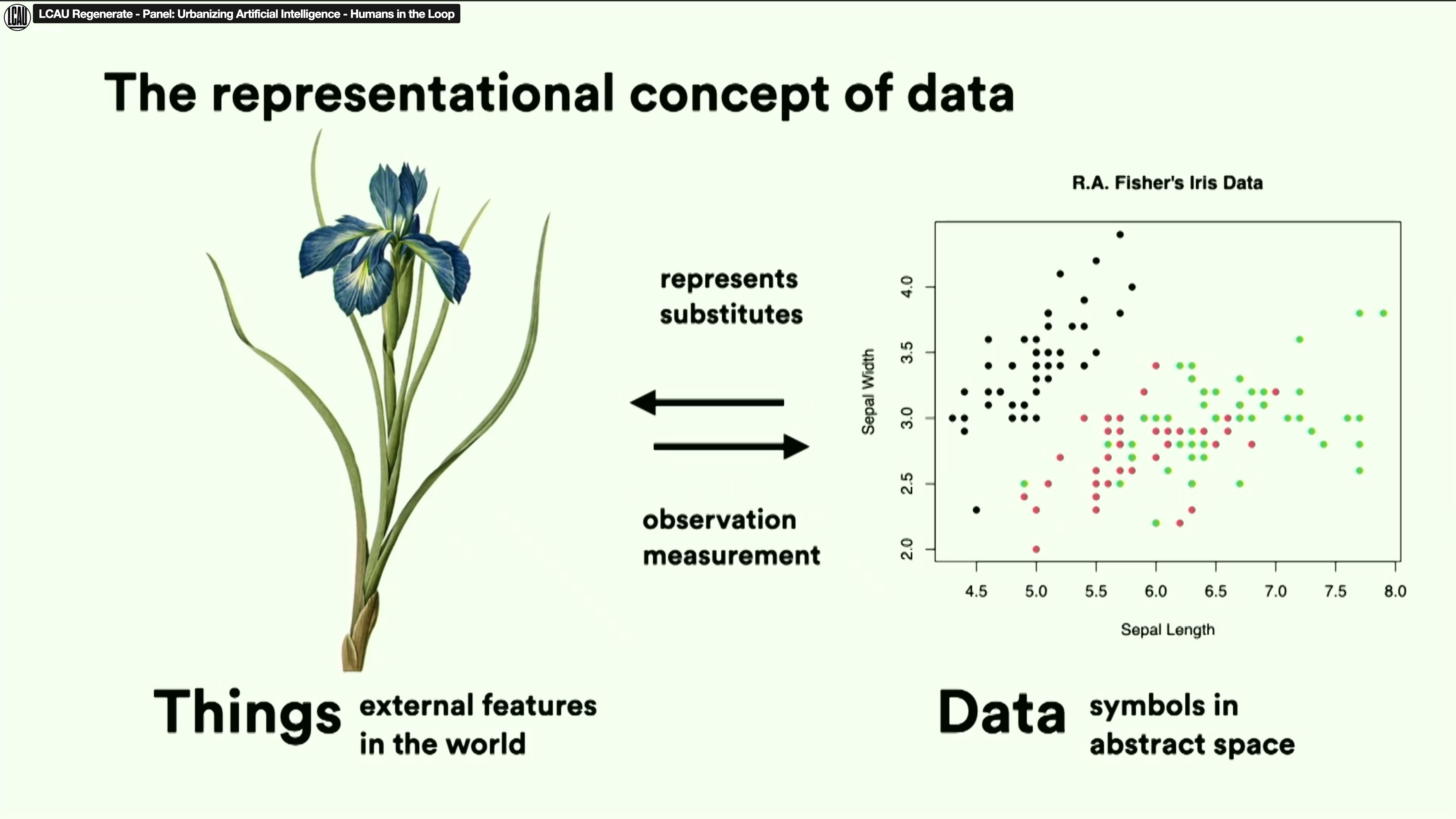Category: Uncategorized
-

Objectivity, in a weak sense
Some clarifications about the concept of objectivity used in autographic design. A core tenet of critical data studies is that data are always subjective. The production of data involves countless arbitrary choices and assumptions that correspond to worldviews, problem framings, and ideologies. From the outset, data are always already interpreted. The field rightly critiques the…
-

Writing on Design, @MIT Morningside Academy of Design
Catherine D’Ignazio, author of “Counting Feminicide: Data Feminism in Action” (The MIT Press, 2024), and Dietmar Offenhuber, author of “Autographic Design: The Matter of Data in a Self-Inscribing World” (The MIT Press, 2024), discuss their latest books in a conversation moderated by MIT Press Executive Editor Gita Manaktala. This session delves into how diverse social…
-

Towards a Definition of Autographic Sonifications
Recent paper, spearheaded by Sara Lenzi on the question of autographic sonifications. Paper presented at the 2023 DRS conference. Lenzi, Sara, Paolo Ciuccarelli, and Dietmar Offenhuber. 2024. “Towards a Definition of Autographic Sonifications: Listening as an Act of Knowledge.” https://dl.designresearchsociety.org/drs-conference-papers/drs2024/researchpapers/200/. image: ‘The End of the War’, a graphic recording on photographic paper of the minute before…
-

Policyviz Interview
Podcast interview with Jon Shwabish of Policyviz. From Jon’s website: “In our conversation, we explore what is meant by autographic design and urge a wider lens on data to grasp multifaceted problems thoroughly. Additionally, Dietmar’s work underscores the interplay between qualitative and quantitative methods, emphasizing the role of subtlety and conjecture in data interpretation to…
-

Read the Introduction Chapter
“The principal disadvantage of symbols is that we confuse them withreality,” as writer Alan Watts observes. One can easily get lost in the worldof digital media, making it difficult to imagine information that is not sym-bolically encoded in words, pixels, or bytes. And yet the material origins andmanifestations of data matter. Without considering them, a…
-

Shapes and Frictions of Synthetic Data
New paper in Big Data & Society (open access) examining the phenomenon of synthetic data, theorizing it as non-representational data with autographic aspects. Link to the paper Presentation at LCAU symposium, summarizing the main points. Synthetic data are computer-generated data that mimic and substitute empirical observations without directly corresponding to real-world phenomena. Widely used in…
-

Bibliography
Review of the Book Allen, Tania. 2024. “Autographic Design: The Matter of Data in a Self-Inscribing World.” Design Issues 40 (4): 88–90. https://doi.org/10.1162/desi_r_00785. Selected work by others on Autographic Design Gil-Fournier, Abelardo, and Jussi Parikka. 2024. “Enclosures of Wind: Practice-Led Methods for Visualization of Elemental Media.” Media+ Environment 6 (2). https://mediaenviron.org/article/124525. (open access) Heinicker, Paul.…
-

Dustmark in Rio
I was invited to show Staubmarke (Dustmark) in Rio De Janeiro at the exhibition Existencia Numerica curated by Barbara Castro, Doris Kosminsky, and Luiz Ludwig. We created two dustmarks at Pontifical Catholic University and Rio de Janeiro State University.
-

Wasting to Slow Time – the Materiality of Informational Waste
This chapter examines the concept of informational waste by tracing its relationships with energy, value, and time. The concept of data exhaust is often used as a metaphor for datasets that have outlived their original role and are subsequently used for the secondary purposes of analytics and surveillance. In this chapter, the concept is taken literally by…
-

Data is a material artifact – interview for The New Open
Interview with Angela Rout on Autographic Design for The New Open, an initiative by TU Delft.
-

Talk about synthetic data at MIT conference
A short introduction about my work on synthetic data from Nov. 2023
-

Autographic explorations of touch perception
In this series of studies, together with Bernice Rogowitz and Laura Perovich, we explored a novel autographic method for recording touch interactions on the surface of objects. This allowed us to study how people use their sense of touch to gain information about objects and solve cognitive tasks related to them. This research is relevant…
-

New Elements – Analog Computing and the Environment
Exhibition “New Elements”Laboratoria Arts & Science Foundation,New Tretyakov Gallery MoscowNovember 17, 2021 – February 27, 2022https://laboratoria.art/en/new-elements/ Curated by Daria Parkhomenko & Dietmar Offenhuber The physical world is an analog computer. Everything that happens in the atmosphere, the soil, or the water inscribes itself into the world in countless ways. Polar ice, ocean sediments, and coral…
-

The Planet as a Photographic Plate
Comissioned by Lukáš Likavčan, curator of “Earthlings“, the 11th edition of Fotograf Festival in Prague in 2021. Originally published in Fotograf Magazine 20 (40): 66–71. [pdf here] Abstract: Climate change research depends on a vast array of material data sources, yet in its public discourse, we find generic data visualizations detached from sensory experience. To bridge the…
-

What do we talk about when we talk about data physicality?
Best Paper Award IEEE CG&A Published in IEEE Computer Graphics & Applications journal special issue on data physicalization Preprint Abstract: Data physicalizations “map data to physical form,” yet many canonical examples are not based on data sets. To address this contradiction, I argue that the practice of physicalization forces us to rethink traditional notions of data. This…
-

Public evidence — autographic visualizations of contagion
A short blogpost written during the pandemic. Like any complex matter of public concern, the discourse around the COVID pandemic relies heavily on visual information. Over the past months, many iconic visualizations have emerged in the popular discussion. National newspapers explain the interpretation of logarithmic scales and weigh the pros and cons of absolute and…
-

Ozone Tattoo
Partners: Dr. Vehram Elagoz, Lesley University, Dr. Kent Burkey, USDA ARS Maryland Among other issues, climate change leads to an increase in ground-level ozone, a pollutant with harmful impacts on plants, animals, and humans. Ozone tattoo is an autographic visualization project that uses ozone-sensitive plants as bio-indicators to visualize ozone pollution. Ozone tattoos are damage patterns on…
-

Data by Proxy – Material Traces as Autographic Visualizations
Summary of my 2019 paper at IEEE VIS 2019, originally written for Multiple Views: Visualization Research Explained. Following Introduction Data visualization has a seemingly trivial limitation: it can only begin once data exist. Once data exist, however, the material processes and conditions of their collection tend to be forgotten. Many public controversies — about the nature of…
-

Staubmarke (Dustmark)
Staubmarke is a public space installation for the Drehmoment Festival in Stuttgart – a city affected by airborne particulate matter pollution. Controversies between public health advocates, the city, and the local industry often manifest in disputes about proper methods of measurement and the veracity of citizen-collected data. The project visualizes air pollution by calling attention to the patina on the…
-

Autographic visualization examples
Pinterest board with 700+ Autographic visualization examples created together with Orkan Telhan.
-

Indexical Visualization
The starting point of this project, a collaboration with Orkan Telhan. Published 2015 In Ubiquitous Computing, Complexity and Culture, edited by Ulrik Ekman, Jay David Bolter, Lily Diaz, Morten Søndergaard, and Maria Engberg, 288–303. New York: Routledge Indexical Visualization – the data-less information display Read the chapter Contemporary cultures of ubiquitous computing have given rise…



















